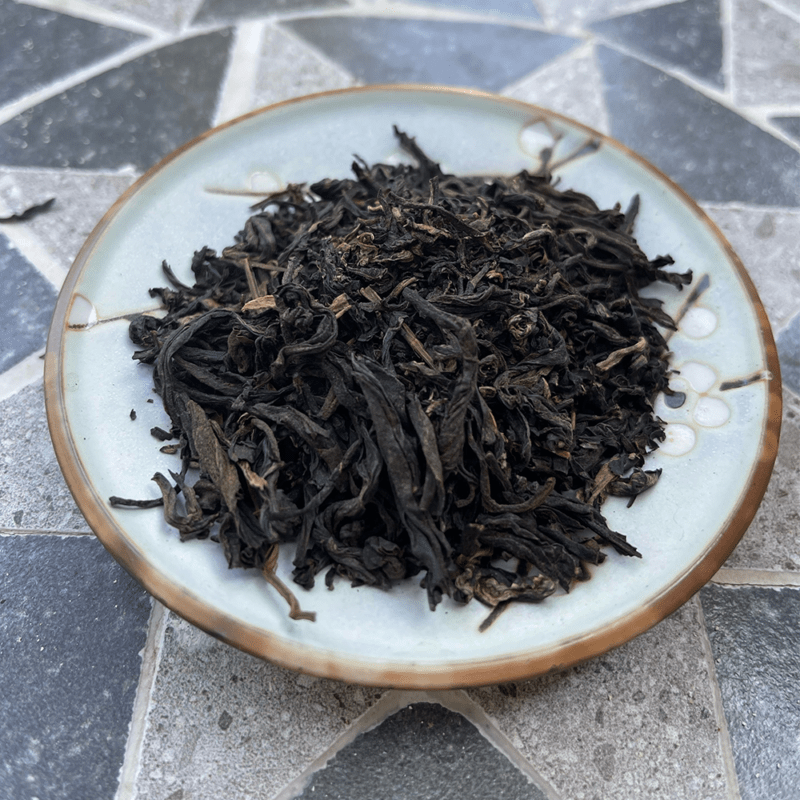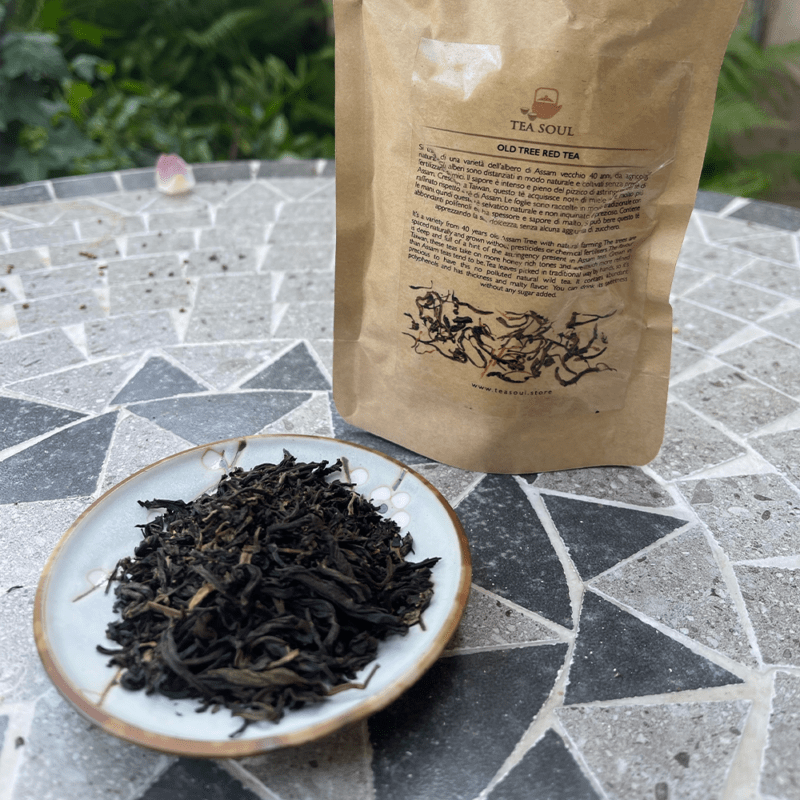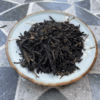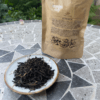VARIETIES AND TYPES OF TEA
REGIONS
CHINA
JAPAN
TAIWAN
THAILAND






7.80€ Taxes included
Old Tree red tea, from a plantation that has been on the island of Taiwan for more than 40 years, is a product of excellence. This full-bodied tea reveals a particular sweetness in the cup, with hints of cocoa and liqueur notes reminiscent of an excellent sherry.
This Old Tree red tea from Taiwan allows us to talk about the origin of this type of tea, which has a fairly recent history. This tea in fact comes from a cultivar native to the region from Assam in India, imported into the country around the early 1960s’ when experiments were being conducted in Taiwan to create a cultivar suitable for red and white tea production. The results of these experiments were the creation of a cross of the camellia assamica variant with a local variety, which was finally given the name Ruby#18.
This Taiwanese red tea, from a plantation that has been on the island for more than 40 years, is as if it were a progenitor of this recent Taiwanese cultivar, showing us the meeting point between more typically Indian flavors and those able to develop thanks to the expert processing of Chinese farmers who expatriated to the island years ago.
Given the antiquity and the care taken in maintaining this plantation, we can have a liquor that is very rich in flavor and has a wide aromatic range, which gives off faintly woody notes before revealing its bursting fortified sweetness, reminiscent at times of honey and at times of a well-aged sherry.
Old Tree red tea has long, rolled leaves with a dull surface and colors between dark brown and light brown, with some golden buds. As soon as infused, the leaves give off notes of wood, cork, and cocoa bean, with a close on the nose of cooked fruit and vanilla. The liquor in the cup is deep orange-red in color, with magnificent amber hues and good brightness.
GONG FU CHA
The first infusion of Old Tree red tea reveals notes of sweet cocoa, woody hints of wood and bark, and a hint of vanilla: very faint notes of damp earth and red grape arrive in succession. With the second infusion, the flavors intensify: milk chocolate emerges, followed by corky notes and then fruity notes reminiscent of cherries in spirit and cooked plums, with the appearance of a pleasant acidity that balances well with an almost honeyed sweetness, now much more intense than in the first infusion. The third infusion, in addition to showing good minerality, brings to increase in intensity the liqueur notes, with rather marked hints of sherry and grape must, which are followed by notes of dark chocolate and red fruits.
WESTERN
The first notes of Old Tree red tea are fortified and sweet, with hints of sherry and vanilla. The evolution on the palate then brings out fruity hints of cherry and black cherry, with a slight acidity also perceptible in grape must notes. There are then woody notes, reminiscent of barrel wood, and a sweetness of chestnut honey. The finish has notes of dates and dark chocolate, which lingers along with the slightly acidic note of grape must. The body is round and enveloping on the palate, with no bitterness or astringency.
Taiwan
After harvesting, Old Tree red tea leaves are allowed to wither in the sun for some time depending on the producer before moving on to the folding stage. The leaves are then folded and rolled so that the juices inside are stirred and the oxidation process can begin. Once the leaf reaches its typical brown colour, the residual moisture inside is removed and after a few days’ rest the tea is ready to be consumed.
We strongly recommend infusing Old Tree red tea in the traditional Chinese method (Gong Fu Cha) with a gaiwan with a capacity of about 150 ml. By following this preparation, multiple infusions can be made with 5 grams of leaves that are useful to best capture all the flavor nuances of the tea.
Heat the water to a temperature of 90°C and proceed with an initial 15-second infusion. Keeping the water at the same temperature, you can then continue to exploit the same leaves by adding more water and increasing the infusion time by 5 seconds each time (15 – 20 – 25…).
This tea has a longevity of about 7 brewings.
For a more classic preparation according to the Western style, we recommend 3 grams of leaves in a 200-mL cup with water at 90°C for an infusion time of 3 minutes.
For a better tasting experience, we suggest that you strain the tea as soon as the brewing time is over. The infusion timings we suggest can be slightly modified to your liking to achieve a more or less intense taste.
Store in a cool, dry place away from direct sunlight.
| Weight | 0.000000 g |
|---|---|
| Dimensions | 0.000000 × 0.000000 × 0.000000 cm |
| Detail - Temperature | 90°C |
| PACKAGE | 25 g, 250 g, 50 g, 500 g |
| Detail - Brewing | warming |
| Feature - Caffeine | Medium caffeine |
| Preparation - Gaiwan | 5gr x 150ml / 15-20-25… sec / 7 brewings |
| Preparation - Mug | 3gr x 200ml / 3 min / 2 infusions |
| Feature - Oxidation | Total oxidation |
| Other - Origin | Taiwan |
| Other - Taste | Woody/sweet |
| Other - Instants | Drink |

WHEN TO DRINK THE TEA

